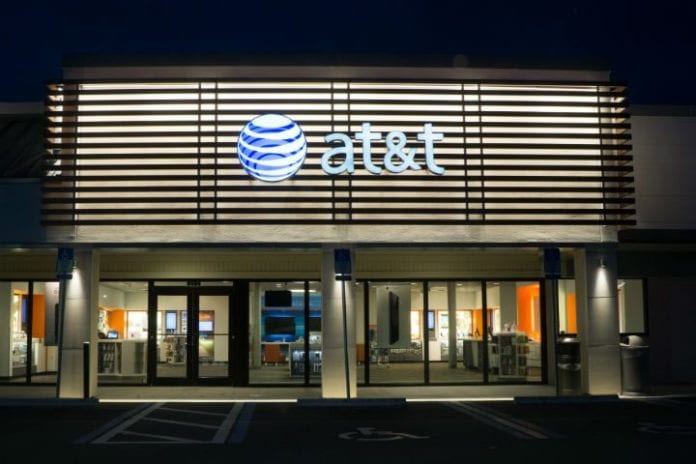AT&T Q4 call dominated by policy questions, but carrier said to be ahead of schedule on software integration, light on new 5G details.
AT&T’s latest chat with the financial analyst community concerning its fourth quarter operations performance was dominated by talk of a potential impact from the new presidential administration, though the operator did manage to provide some color on its plans for greater software control and “5G.”
AT&T CFO John Stephens noted the carrier was ahead of schedule in terms of its push to integrate software control deeper into its network operations, claiming the carrier had 34% of its network virtualized at the end of 2016. The carrier began the year with just 5.7% software control, and is said to remain on track to have 75% control by the end of 2020.
As for its efforts, Stephens highlighted the carrier’s NetBond product, which the company launched in early 2014, and is designed as a fully managed network and cloud infrastructure connection model targeting a range of cloud service providers. Stephens claimed 19 of the industry’s top cloud service providers were now offering NetBond to customers.
AT&T late last year signed a deal with Amazon Web Services to integrate the NetBond product with the AWS Direct Connect package in a move designed to provide secure access to software-as-a-service providers Infor and Pegasystems. The telecom operator said the new architecture is designed to simplify network management and increase performance for companies looking to move towards cloud platforms using the AT&T multiprotocol label switching network. That network connection allows users to bypass the public internet in a move to increase security and performance.
AT&T was a bit light on details surrounding its ongoing 5G network trials. Chairman and CEO Randall Stephenson did highlight the company’s ongoing investment in spectrum and infrastructure to support its current LTE-based operations, claiming the carrier has invested $27 billion in spectrum over the past five years and was currently working to integrate 40 megahertz of new capacity into its operations.
The carrier earlier this month did say planned upgrades to its LTE-Advanced network are expected to support network speeds of up to one gigabit per second at some cell sites this year. Those upgrades are set to include the use of carrier aggregation, with what it terms three-way carrier aggregation planned for some areas and plans to introduce four-way carrier aggregation. AT&T also highlighted plans to densify its network with small cells and tap into the LTE license assisted access technology this year.
Those LTE moves are said to be foundational for the carrier as it moves deeper into 5G network trials, which to this point include collaborations with more than a dozen companies and has so far shown speeds of up to 14 Gbps and network latency of less than three milliseconds in lab trials.
In terms of new plans, AT&T said it will conduct a trial in Austin, Texas, where customers will be able to stream its DirecTV Now video service over a fixed wireless connection. The trial, which is planned for the first half of 2017, is set to include multiple sites and devices, and use millimeter wave spectrum assets.
AT&T, along with rival Verizon Communications, had recently stated they expected initial 5G network deployments to center on fixed broadband uses, where a carrier can use early technical specifications to power enhanced equipment able to support both higher data speeds and greater capacity.
Stephenson did hint at the carrier’s reported leadership position in partnering with the federal government’s First Responder Network Authority to build out a nationwide LTE network serving the public safety community. FirstNet is currently scheduled to announce contracts for the deal on March 14, which would include 20 megahertz of spectrum in the 700 MHz band to be deployed on a priority access basis.
“If we’re successful with our FirstNet bid we get access to another 20 megahertz of prime nationwide spectrum for public safety and secondary use,” Stephenson said.
Mixed Q4 results
AT&T had previously released Q4 operating metrics, which included the addition of roughly 900,000 domestic wireless subscribers, but only about 37% of those were branded phone net additions. The carrier said that of its 900,000 branded net adds, approximately 500,000 were postpaid and 400,000 were prepaid connections.
During the quarter, AT&T said it deactivated about 700,000 2G network connections, of which just 50,000 were postpaid connections. The carrier said that at the end of 2016, it had approximately 2.3 million remaining 2G subscribers and nonvoice phone connections, of which about 100,000 were postpaid. AT&T discontinued 2G service on Jan. 1, 2017.
The 2G shutdown impacted churn results, which increased from 1.5% during Q4 2015, to 1.71% in 2016.
“The 2G shutdown impacted net adds or about 22 basis points of pressure to our total churn,” Stephens explained. “We see it most in our reseller and connected device numbers. But the team executed well and the network shutdown is now complete.”
Bored? Why not follow me on Twitter.

